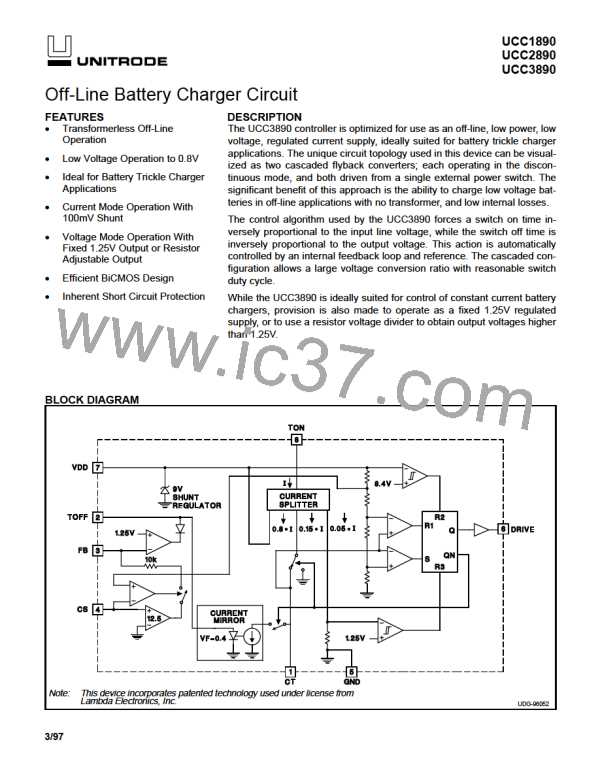UCC1890
UCC2890
UCC3890
APPLICATION INFORMATION (cont.)
If RSH2 is chosen so that
maintain a constant output voltage. For a single flyback
stage at continuous conduction boundary
100mV
= C
RSH2
1
d =
VIN
VOUT
then the regulator output will assist the battery, minimiz-
ing or eliminating battery output current.
1 +
For the cascaded flyback stages of the UCC3890 topol-
ogy, the corresponding equation is
DESIGN EXAMPLE
A typical design has the following requirements:
1
d(max) =
VIN
VOUT
VOUT′
=
=
=
80 to 132 VAC or 100 to 180 VDC
1.25V
2.0V (assumes 1.25 VOUT with
750mV forward drop in D3)
500mADC max
VIN
VOUT′
1 +
√
in this case
ILOAD
=
1
FSWITCHING = 100kHz
d(max) =
= 0.125
η (eff.)
=
50% (excluding efficiency losses in
D3 which will be very large due to the
low output voltage. Losses in D3 are
accounted for by using VOUT′ in the
calculations).
100V
2V
1 +
√
Next using the operating frequency and the maximum
duty cycle to calculate the maximum on time
d(max)
TON(max) =
Component values are indicated in Figure 3. The expla-
nation for the choices in component values follows.
FSWITCHING
in this case
0.125
First calculate the maximum duty cycle, d(max). To cal-
culate this assume that at maximum load/minimum line
conditions, the converter will be at the continuous con-
duction boundary and there will be no idle time after the
inductors are discharged. For all other load/line condi-
tions, the UCC3890 will stretch the off time, to create an
idle time after the inductors are discharged, in order to
TON(max) =
= 1.25µs
100kHz
correspondingly
1 − 0.125
100kHz
TOFF(min) =
= 8.75µs
UDG-96056
Figure 3. Example Application
5

 TI [ TEXAS INSTRUMENTS ]
TI [ TEXAS INSTRUMENTS ]